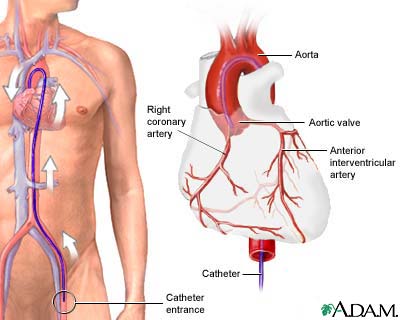
Angiotensin-converting enzyme inhibitors: These bring down blood pressure and help slow or stop the progression of CAD.Nitroglycerin patches, sprays, or tablets: These relax the arteries and reduce the heart’s demand for blood, as well as soothe chest pain.Beta-blockers: A doctor may prescribe beta-blockers to reduce blood pressure and heart rate, especially among people who have already had a heart attack.Medications that people can take to reduce the risk or impact of CAD include: However, some people may need to undergo medical procedures. Doctors may also prescribe medications to prevent the progression of CAD. Treatment tends to involve making positive lifestyle changes, such as quitting smoking, adopting a healthy diet, and getting regular exercise.

However, there are ways that a person can manage the condition. If a person is showing symptoms of a heart attack, it is vital to call emergency services immediately. It can last from a few minutes to several hours.Ī heart attack is a medical emergency that can result in death or permanent heart damage. The pain is often constant but may come and go. Symptoms can be more atypical in women.Ĭhanging position, resting, or lying down is unlikely to bring relief. The first symptom is usually chest pain that spreads to the neck, jaw, ears, arms, and wrists, and possibly to the shoulder blades, back, or abdomen. This clot, if it is big enough, can completely stop the supply of blood to the heart in that blood vessel. The formation of a blood clot is called coronary thrombosis. ComplicationsĪ heart attack occurs when the heart muscle does not have enough blood or oxygen, such as when a blood clot develops from plaque in one of the coronary arteries. If a plaque has ruptured, it can cause shortness of breath at rest. If the heart and other organs do not receive enough oxygen, any form of exertion can become very tiring, which may cause a person to pant for air. This is a type of chest pain linked to heart disease.Īngina may cause the following feelings across the chest:Īngina might also cause the following symptoms:ĬAD can also lead to shortness of breath. According to the Centers for Disease Control and Prevention, it is the most common type of heart disease in the United States, where it accounts for more than 655,000 deaths every year.ĬAD can lead to angina. If these arteries narrow, the heart may not receive enough oxygen-rich blood, especially during physical activity.ĬAD can sometimes lead to a heart attack. A clot can sometimes obstruct blood flow, causing serious health problems.Ĭoronary arteries form the network of blood vessels on the surface of the heart that feeds it oxygen. These plaques cause the arteries to narrow, reducing blood flow to the heart, or can cause inflammation in and hardening of the walls of the blood vessel. The coronary arteries are the blood vessels that supply oxygen and blood to the heart.ĬAD tends to develop when cholesterol builds up on the artery walls, creating plaques. The Journal covers all aspects of cardiovascular medicine (full listing below) with an emphasis on studies that challenge the status quo of treatments and practices in cardiovascular care or facilitate the translation of scientific advances into the clinic as new therapies or diagnostic tools.Ĭardiovascular Epidemiology and PreventionĬardiovascular Biologics and Regenerative MedicineĬardiovascular Genetics and Systems Medicineįrontiers in Cardiovascular Medicine is member of the Committee on Publication Ethics.Coronary artery disease (CAD), or coronary heart disease, develops when the coronary arteries become too narrow or cholesterol blockages develop in the walls. Led by an outstanding Editorial Board of international experts, this multidisciplinary open-access journal provides a unique forum that helps scientists and clinicians to disseminate novel discoveries and technologies widely, advance scientific knowledge rapidly, and propose new paradigms and theories.

Frontiers in Cardiovascular Medicine publishes peer-reviewed research articles across basic, translational, and clinical cardiovascular medicine.


 0 kommentar(er)
0 kommentar(er)
